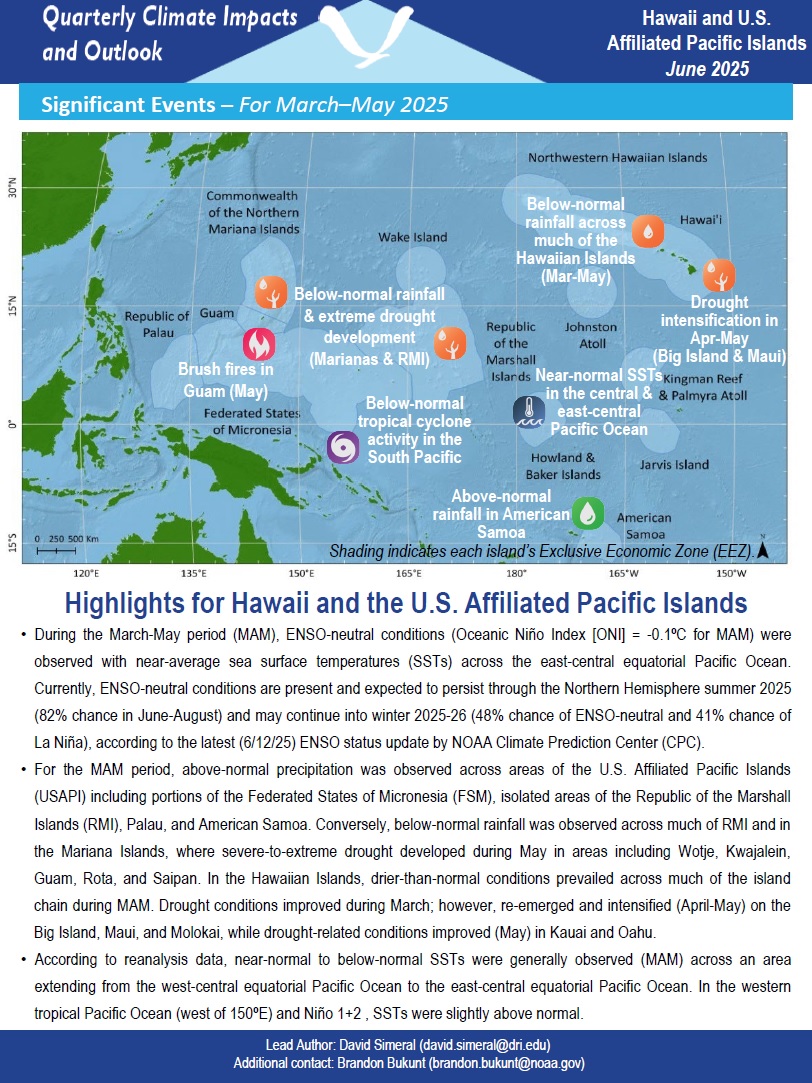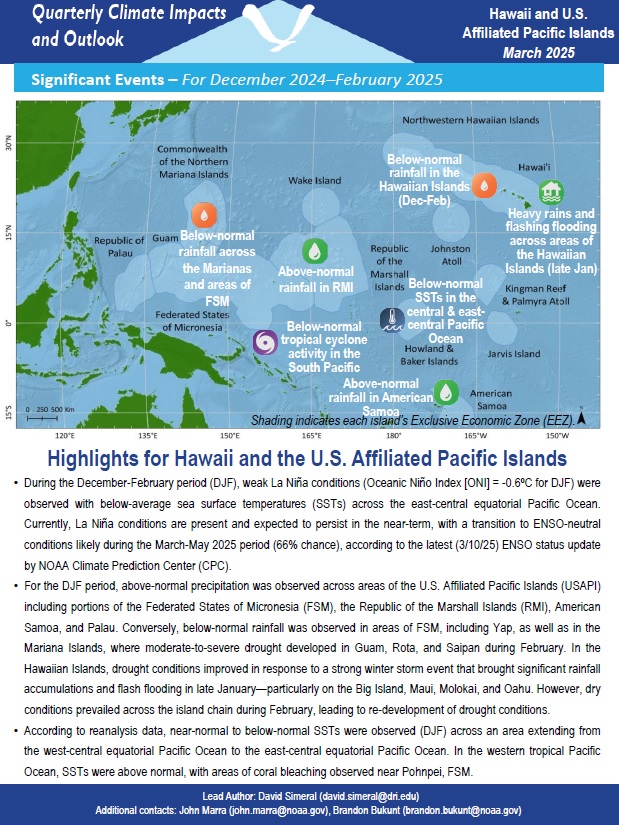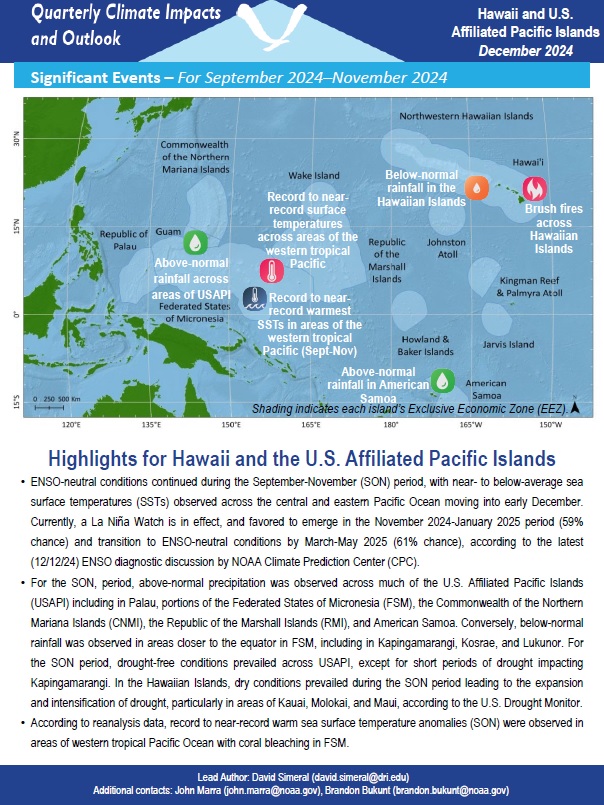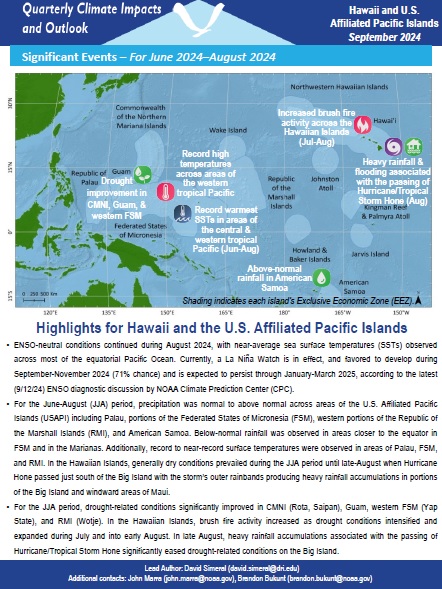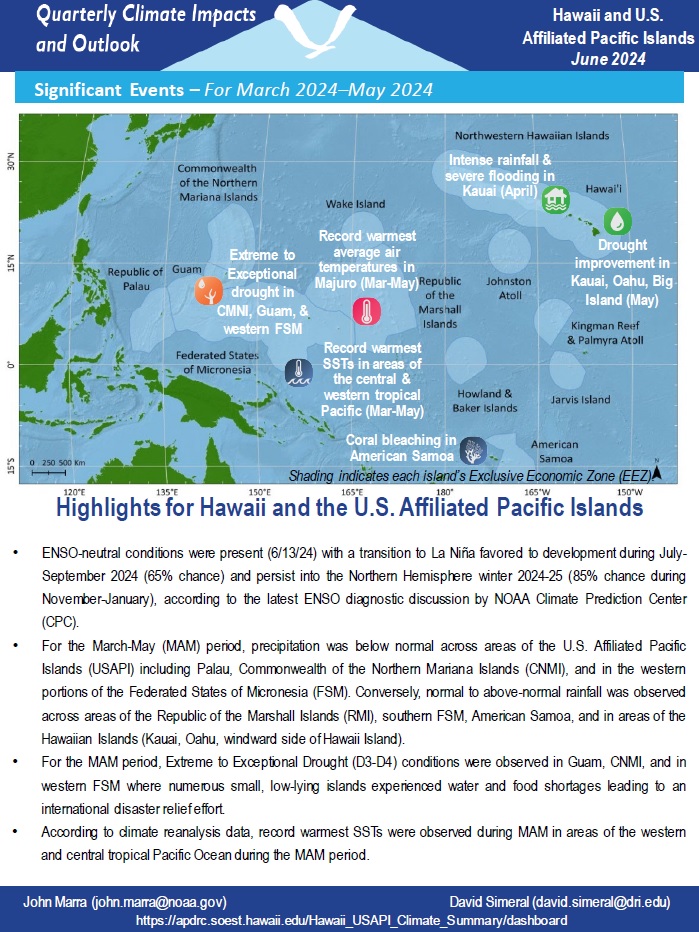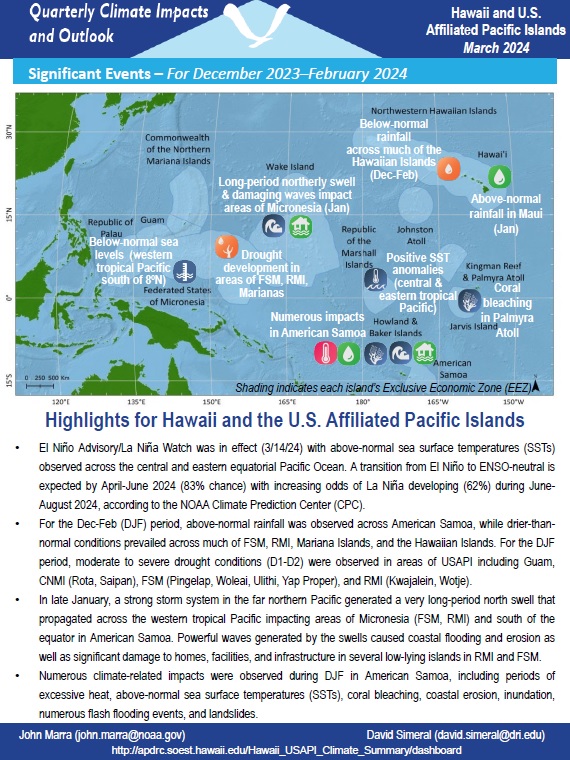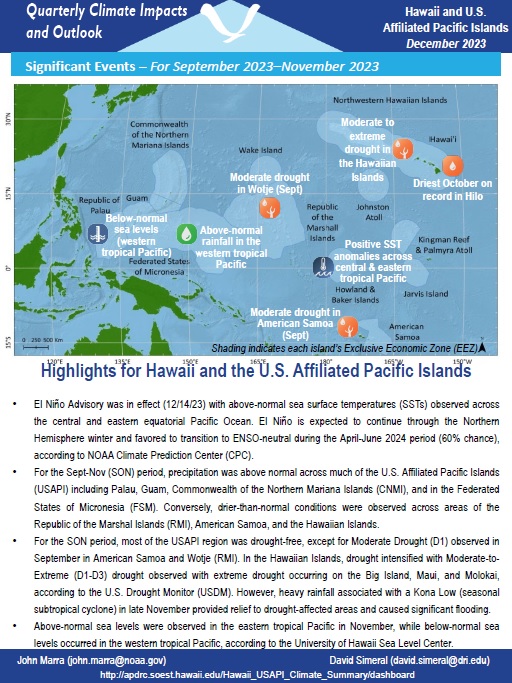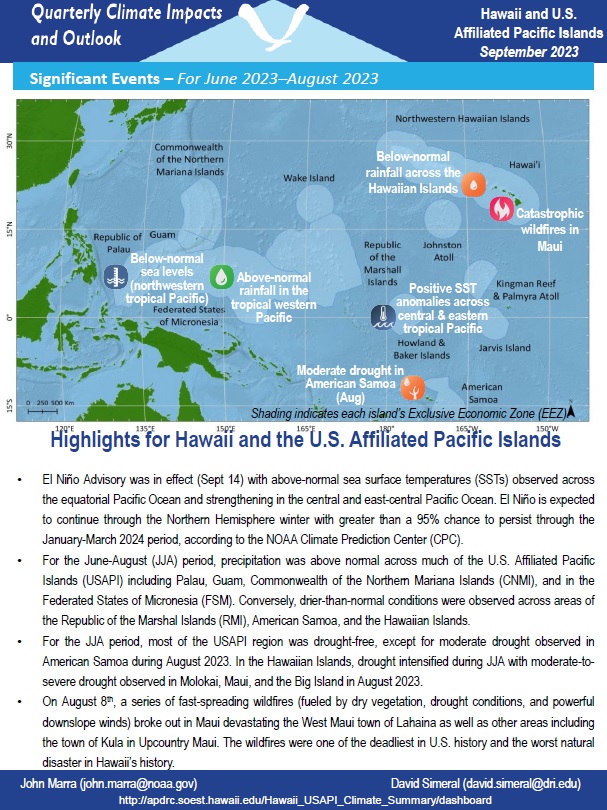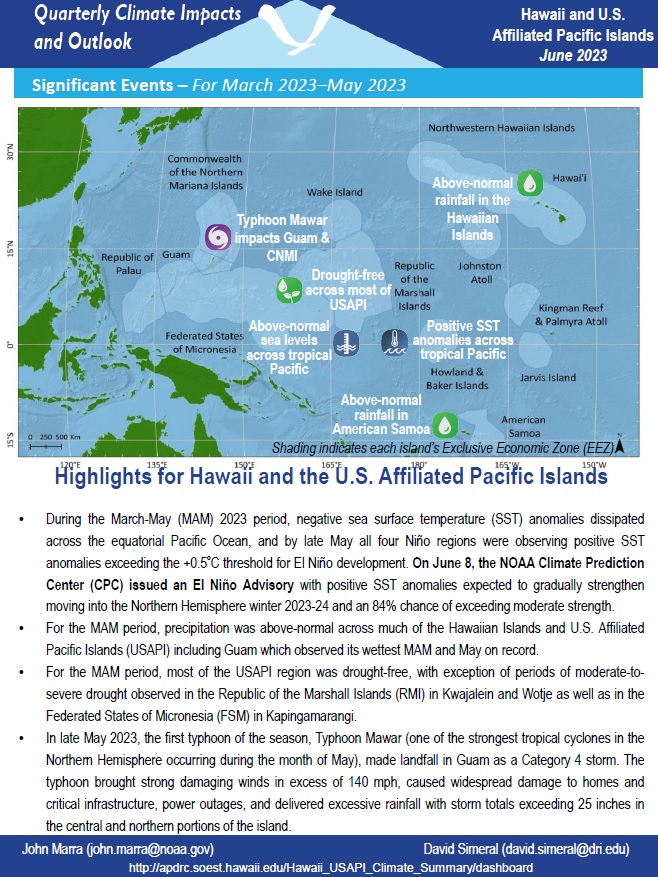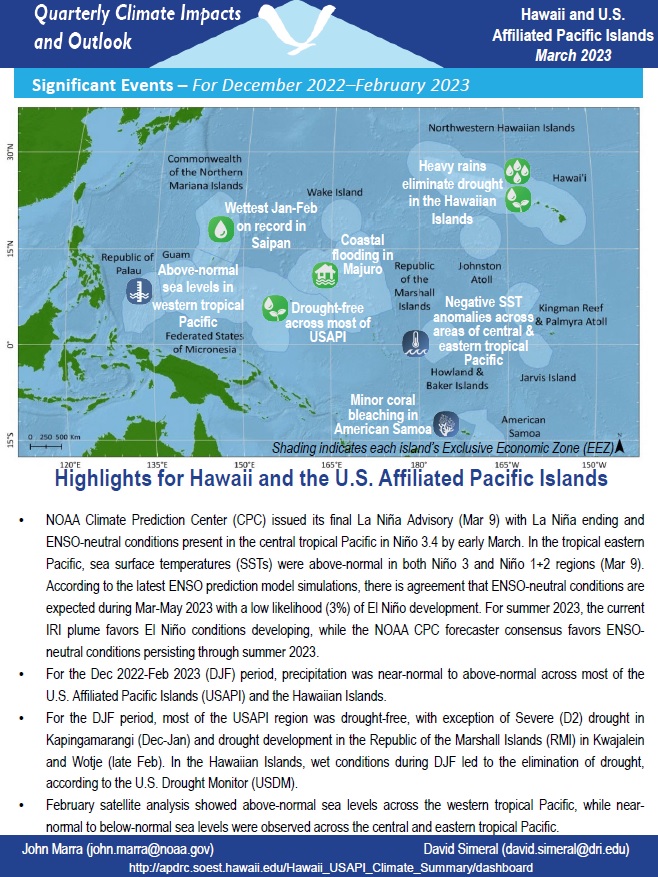Quarterly Climate Impacts and Outlook for the Pacific Region for March–May 2025. Dated June 2025.
For the March-May period, above-normal precipitation was observed across areas of the U.S. Affiliated Pacific Islands (USAPI) including portions of the Federated States of Micronesia (FSM), isolated areas of the Republic of the Marshall Islands (RMI), Palau, and American Samoa. Conversely, below-normal rainfall was observed across much of RMI and in the Mariana Islands. In the Hawaiian Islands, drier-than-normal conditions prevailed across much of the island chain.
Quarterly Climate Impacts and Outlook for the Pacific Region for December 2024–February 2025. Dated March 2025.
Quarterly Climate Impacts and Outlook for the Pacific Region for September–November 2024. Dated December 2024.
In September–November, above-normal precipitation was observed across much of the U.S.-Affiliated Pacific Islands (USAPI), including in Palau, portions of the Federated States of Micronesia (FSM), the Commonwealth of the Northern Mariana Islands, the Republic of the Marshall Islands, and American Samoa. Conversely, below-normal rainfall was observed in areas closer to the equator in FSM, including in Kapingamarangi, Kosrae, and Lukunor.
Quarterly Climate Impacts and Outlook for the Pacific Region for June–August 2024. Dated September 2024.
For the June-August period, precipitation was normal to above normal across areas of the U.S. Affiliated Pacific Islands (USAPI) including Palau, portions of the Federated States of Micronesia (FSM), western portions of the Republic of the Marshall Islands (RMI), and American Samoa. Below-normal rainfall was observed in areas closer to the equator in FSM and in the Marianas.
Quarterly Climate Impacts and Outlook for the Pacific Region for March–May 2024. Dated June 2024.
Quarterly Climate Impacts and Outlook for the Pacific Region for December 2023–February 2024. Dated March 2024.
For the Dec-Feb (DJF) period, above-normal rainfall was observed across American Samoa, while drier-than-normal conditions prevailed across much of FSM, RMI, Mariana Islands, and the Hawaiian Islands. For the DJF period, moderate to severe drought conditions (D1-D2) were observed in areas of USAPI including Guam, CNMI (Rota, Saipan), FSM (Pingelap, Woleai, Ulithi, Yap Proper), and RMI (Kwajalein, Wotje).
Quarterly Climate Impacts and Outlook for the Pacific Region for September–November 2023. Dated December 2023.
For the Sept-Nov (SON) period, precipitation was above normal across much of the U.S. Affiliated Pacific Islands (USAPI) including Palau, Guam, Commonwealth of the Northern Mariana Islands (CNMI), and in the Federated States of Micronesia (FSM). Conversely, drier-than-normal conditions were observed across areas of the Republic of the Marshal Islands (RMI), American Samoa, and the Hawaiian Islands.
Quarterly Climate Impacts and Outlook for the Pacific Region for June–August 2023. Dated September 2023.
For the June–August period, precipitation was above normal across much of the U.S.-Affiliated Pacific Islands, including Palau, Guam, Commonwealth of the Northern Mariana Islands, and in the Federated States of Micronesia. Conversely, drier-than-normal conditions were observed across areas of the Republic of the Marshall Islands, American Samoa, and the Hawaiian Islands.
Quarterly Climate Impacts and Outlook for the Pacific Region for March–May 2023. Dated June 2023.
For the March–May period, precipitation was above-normal across much of the Hawaiian Islands and U.S. Affiliated Pacific Islands (USAPI) including Guam, which observed its wettest March–May and May on record.
Quarterly Climate Impacts and Outlook for the Pacific Region for December 2022–February 2023. Dated March 2023.
For the December–February period, precipitation was near-normal to above-normal across most of the U.S. Affiliated Pacific Islands (USAPI) and the Hawaiian Islands.


